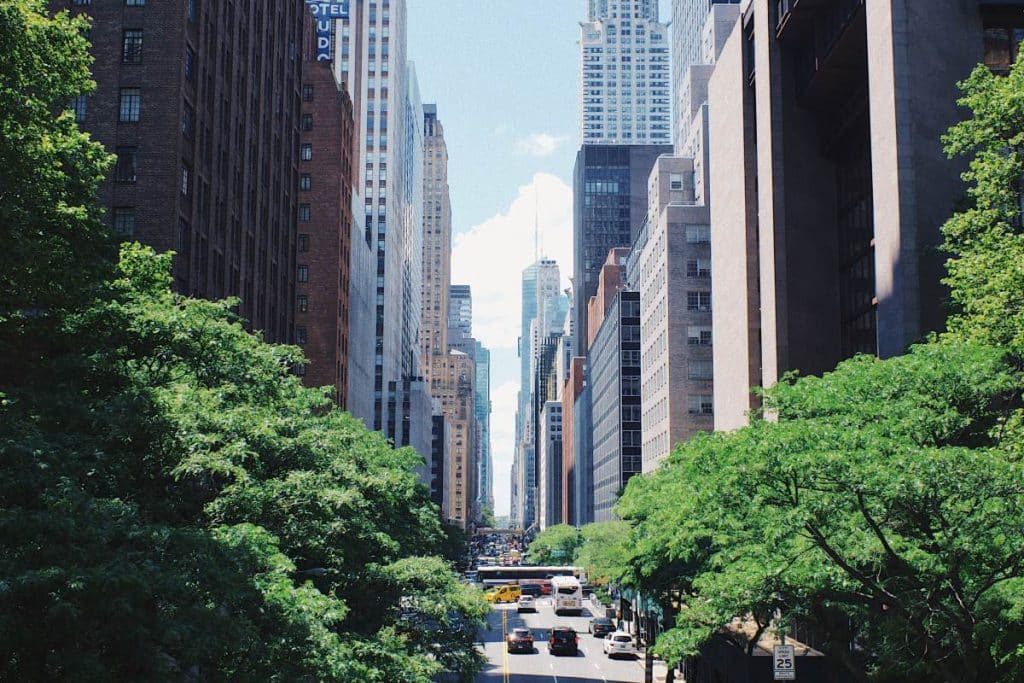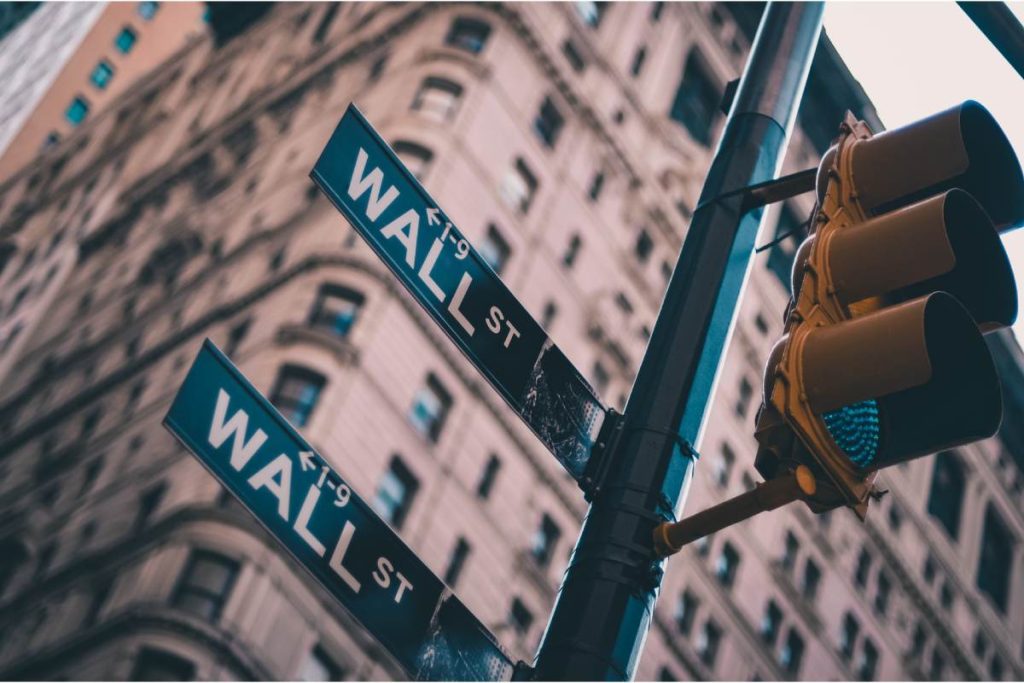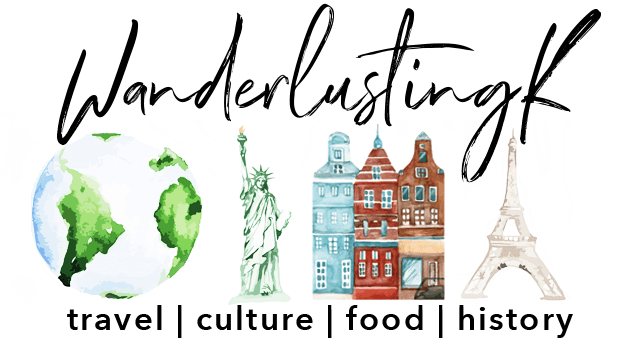Have you ever walked the bustling streets of New York City and wondered about the stories etched into its skyscrapers and sidewalks? New York City, a metropolis that never sleeps, is not just a hub of modern-day hustle but a treasure trove of history waiting to be unraveled. But what lies beneath this city’s modern facade?
TL;DR:
- From New Amsterdam to the Big Apple: The Evolution of New York City.
- Wall Street’s origins: More than just a financial hub.
- How New York City’s population explosion mirrors its cultural and economic growth.
- Exploring the city’s historical landmarks and their hidden stories.
- Tom Wolfe’s quote encapsulates the instant connection one feels with New York City.


Contents
- 1 The Birth of a Metropolis
- 2 Wall Street: A Symbol of Security Turned Financial Powerhouse
- 3 A Melting Pot of Culture and People
- 4 Landmarks with Layers of Stories
- 4.1 The Statue of Liberty: A Beacon of Freedom
- 4.2 The Empire State Building: A Testament to Ambition
- 4.3 Central Park: An Urban Oasis
- 4.4 The Brooklyn Bridge: A Symbol of Connectivity
- 4.5 Times Square: The Crossroads of the World
- 4.6 The Metropolitan Museum of Art: A Cultural Treasure
- 4.7 One World Trade Center: Resilience Redefined
- 4.8 The Chrysler Building: An Art Deco Masterpiece
- 5 Feeling at Home in the Big Apple
- 6 Conclusion
- 7 FAQs
The Birth of a Metropolis
In 1664, a pivotal moment in urban history unfolded as the small Dutch settlement of New Amsterdam was ceded to the English and reborn as New York City. This transformation marked the beginning of an extraordinary journey from a modest community of about 1,500 souls to a bustling metropolis, now home to over 8 million residents. The city’s early days were characterized by its strategic location, serving as a vital trading post and a melting pot of cultures, laying the groundwork for the diverse and dynamic city we know today.
The Dutch Influence
The Dutch legacy in New York City is profound, influencing everything from street layouts to place names. The original settlement, nestled at the southern tip of Manhattan Island, was a microcosm of Dutch culture, with its unique architecture, canals reminiscent of Amsterdam, and a society that was surprisingly modern in its views on religious freedom and diversity. This period laid the foundation for the city’s reputation as a place where different cultures could coexist and thrive.
Transition to English Rule
The transition from New Amsterdam to New York City in 1664 was more than a mere change of rulers; it signified a shift in the city’s destiny. Under English rule, the city rapidly expanded both economically and geographically. The English brought with them different architectural styles, new trade opportunities, and a different administrative system, which further shaped the evolving character of the city.
Colonial New York
As a British colony, New York played a significant role in the early history of the United States. The city was a hotbed of revolutionary ideas and activities. It witnessed key events of the American Revolution, including the infamous Stamp Act Congress and the drafting of the Declaration of Independence. This era was marked by political turmoil, but it also set the stage for the city’s future as a center of freedom, innovation, and rebellion against the status quo.
19th Century Expansion
The 19th century saw New York City emerging as a global economic powerhouse. The construction of the Erie Canal in 1825 was a game-changer, connecting the city to the vast agricultural resources of the American interior. This period also saw the rise of New York as a cultural center, with the establishment of numerous theaters, museums, and libraries. The city’s population boomed, driven by waves of immigrants seeking a new life in America, each adding their unique flavor to the city’s cultural melting pot.
Industrialization and Modernization
The advent of the Industrial Revolution brought dramatic changes to New York City. The skyline began to transform with the construction of skyscrapers, a testament to the city’s economic might and architectural ingenuity. The opening of the Brooklyn Bridge in 1883 symbolized the city’s technological prowess and its relentless push towards modernization. This era also saw the introduction of the subway system, further facilitating the city’s expansion and making it a model for urban development worldwide.
The 20th Century: A Global Icon Emerges
The 20th century cemented New York City’s status as a global icon. The city played a central role in major world events, including both World Wars and the Great Depression. It became a hub for the arts, with the Harlem Renaissance bringing a new wave of African American cultural expression. The city also became synonymous with the American Dream, a place where anyone, regardless of their background, could achieve success. The construction of landmarks like the Empire State Building and the United Nations Headquarters added to its global stature.
Resilience in the Face of Adversity
New York City’s history is also a story of resilience. The city has faced numerous challenges, including economic downturns, natural disasters, and the tragic events of September 11, 2001. Each time, New York has emerged stronger, with its spirit of resilience becoming a defining characteristic. The city’s ability to reinvent itself, to rise from adversity, is a testament to the indomitable spirit of its people.
The Modern Metropolis
Today, New York City stands as a beacon of progress, diversity, and innovation. It is a city that constantly evolves, yet retains its rich historical heritage. From the bustling streets of Manhattan to the diverse neighborhoods of Brooklyn and Queens, each corner of the city tells a story of its past, present, and future. As a global center for finance, arts, culture, and politics, New York City continues to fascinate and inspire, drawing people from all corners of the world to experience its unique energy and history.
Wall Street: A Symbol of Security Turned Financial Powerhouse
The iconic Wall Street, a name synonymous with global finance and corporate power, has a history that predates its current fame. In 1653, Dutch settlers, seeking to protect their nascent colony of New Amsterdam, erected a wall that would later give this street its name. This wall, which marked the northern boundary of the settlement, was not just a physical barrier but a symbol of the determination and resilience of the early settlers. It laid the foundation for a street that would evolve into the financial heartbeat of the world.
The Birth of American Capitalism
As New York City grew, Wall Street began to develop into a financial center. The late 18th century saw the emergence of the first brokers and merchants who traded under a buttonwood tree, leading to the formation of the New York Stock Exchange in 1792. This marked the beginning of organized trading in America and set Wall Street on a path to becoming the epicenter of American capitalism.
The Rise of Financial Institutions
The 19th century witnessed the rapid growth of financial institutions along Wall Street. Banks, insurance companies, and other financial entities established their headquarters here, drawn by the street’s growing reputation as a financial hub. The architecture of Wall Street transformed, with imposing buildings symbolizing the strength and stability of these institutions. This era cemented Wall Street’s status as the nerve center of American finance.
The Stock Market Crash and the Great Depression
Wall Street has seen its share of highs and lows, with the most notable low being the stock market crash of 1929. This event triggered the Great Depression, a period of economic hardship that had profound effects on the nation. Wall Street became the focal point of public scrutiny and criticism, a symbol of the excesses of the financial industry. However, it also became a site for reform and regulation, leading to significant changes in how financial markets operated.
Wall Street in the Modern Era
In the post-World War II era, Wall Street entered a period of unprecedented growth and influence. The latter half of the 20th century saw the rise of global finance, with Wall Street at its helm. The introduction of new financial instruments, the globalization of markets, and the advent of digital trading transformed Wall Street into a complex and dynamic financial ecosystem. Today, it stands as a global symbol of financial power and innovation.
Wall Street and Popular Culture
Wall Street’s influence extends beyond finance; it has become deeply ingrained in popular culture. It has been the backdrop for numerous films, books, and television shows, often portrayed as a place of ambition, power, and sometimes greed. This cultural depiction has shaped public perception of the finance industry and has made Wall Street a household name across the world.
The Future of Wall Street
As we look to the future, Wall Street continues to evolve. With the rise of fintech, sustainable investing, and increasing global interconnectedness, Wall Street is at the forefront of financial innovation. It remains a barometer of the global economy and a testament to the ever-changing nature of the financial world.

A Melting Pot of Culture and People
New York City’s history is a testament to its role as a cultural and economic powerhouse. The exponential growth in population mirrors the city’s evolution into a global hub of diversity and opportunity.
Landmarks with Layers of Stories
New York City, a canvas of architectural diversity and historical depth, is studded with landmarks that are not merely structures but storytellers of the city’s past. From the soaring heights of the Empire State Building to the welcoming torch of the Statue of Liberty, each landmark holds a narrative that intertwines with the city’s history, embodying its spirit of resilience, innovation, and diversity.
The Statue of Liberty: A Beacon of Freedom
The Statue of Liberty, standing tall on Liberty Island, is more than just a symbol of New York City; it represents the ideals of freedom and democracy. Gifted by France in 1886, this colossal statue greeted millions of immigrants as they arrived in America, seeking a new life. It stands as a poignant reminder of the city’s role as a melting pot of cultures and the gateway to the American dream.
The Empire State Building: A Testament to Ambition
The Empire State Building, once the tallest building in the world, is a marvel of Art Deco design and engineering ingenuity. Completed in 1931 during the Great Depression, it symbolized hope and ambition in a time of economic despair. The building’s construction was a feat of human endeavor and a bold statement of New York City’s indomitable spirit.
Central Park: An Urban Oasis
Central Park, a sprawling green haven in the heart of Manhattan, offers a tranquil escape from the city’s frenetic pace. Designed by Frederick Law Olmsted and Calvert Vaux in the 19th century, this public park was one of the first of its kind in America. It reflects the city’s foresight in urban planning and its commitment to creating spaces for leisure and community gathering.
The Brooklyn Bridge: A Symbol of Connectivity
The Brooklyn Bridge, an iconic suspension bridge completed in 1883, was a groundbreaking achievement in its time. Connecting Manhattan and Brooklyn, it symbolized the unification of the city and the triumph of engineering over geographical challenges. The bridge’s distinctive design and enduring strength make it a testament to New York City’s innovative spirit.
Times Square: The Crossroads of the World
Times Square, with its dazzling array of neon lights and billboards, is a hub of entertainment and commerce. Known as the “Crossroads of the World,” this bustling square has evolved from a commercial district to a global symbol of urban vibrancy. It’s a place where art, culture, and commerce intersect, reflecting the city’s dynamic and ever-changing nature.
The Metropolitan Museum of Art: A Cultural Treasure
The Metropolitan Museum of Art, one of the largest and most prestigious art museums in the world, houses a vast collection that spans 5,000 years of world culture. Founded in 1870, the Met is not just a museum but a custodian of human creativity, offering a window into the world’s artistic heritage and New York City’s commitment to cultural preservation and education.
One World Trade Center: Resilience Redefined
One World Trade Center, standing on the site of the original Twin Towers, is a powerful symbol of resilience and rebirth. Completed in 2014, it is the tallest building in the Western Hemisphere, representing the city’s resolve to rebuild and move forward in the aftermath of the 9/11 attacks. The building is a tribute to the enduring spirit of New York and its people.
The Chrysler Building: An Art Deco Masterpiece
The Chrysler Building, known for its distinctive terraced crown, is an Art Deco masterpiece and an icon of the New York skyline. Completed in 1930, it was briefly the world’s tallest building before being surpassed by the Empire State Building. The building’s design reflects the opulence of the Jazz Age and the city’s architectural innovation during the early 20th century.
Feeling at Home in the Big Apple
Tom Wolfe once said, “One belongs to New York instantly, one belongs to it as much in five minutes as in five years.” This quote captures the essence of New York City’s welcoming spirit, regardless of how long one has been there.
Conclusion
New York City’s history is as diverse and dynamic as its people. From its humble beginnings to its status as a global icon, the city continues to captivate and inspire. As we walk its streets, let’s remember the rich history that paves our path.
FAQs
What was New York City originally called?
Originally, it was called New Amsterdam before being renamed New York City in 1664.
Why is Wall Street so significant in New York City’s history?
Wall Street was initially built as a protective wall by Dutch settlers in 1653 and later evolved into a financial hub.
How did New York City grow from a small settlement to a metropolis?
Through waves of immigration and economic development, New York City grew from a small settlement of 1,500 people to a bustling metropolis of over 8 million residents.
Can you feel an instant connection to New York City?
As Tom Wolfe said, one can feel an instant connection to New York City, whether they’ve been there for five minutes or five years.
What are some historical landmarks in New York City?
Iconic landmarks include the Statue of Liberty, Empire State Building, and Central Park, each with its own unique history.
Sources:

Leave a Reply